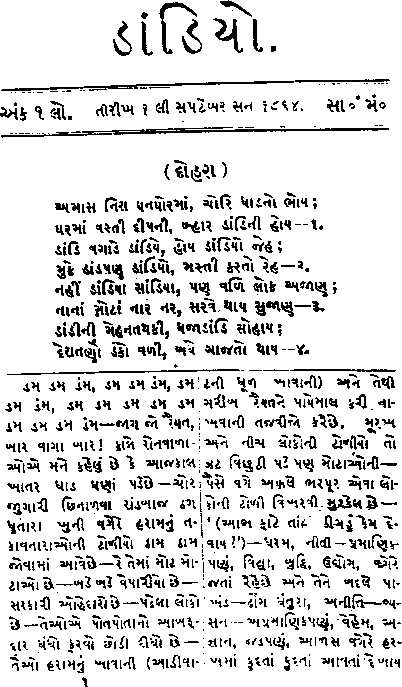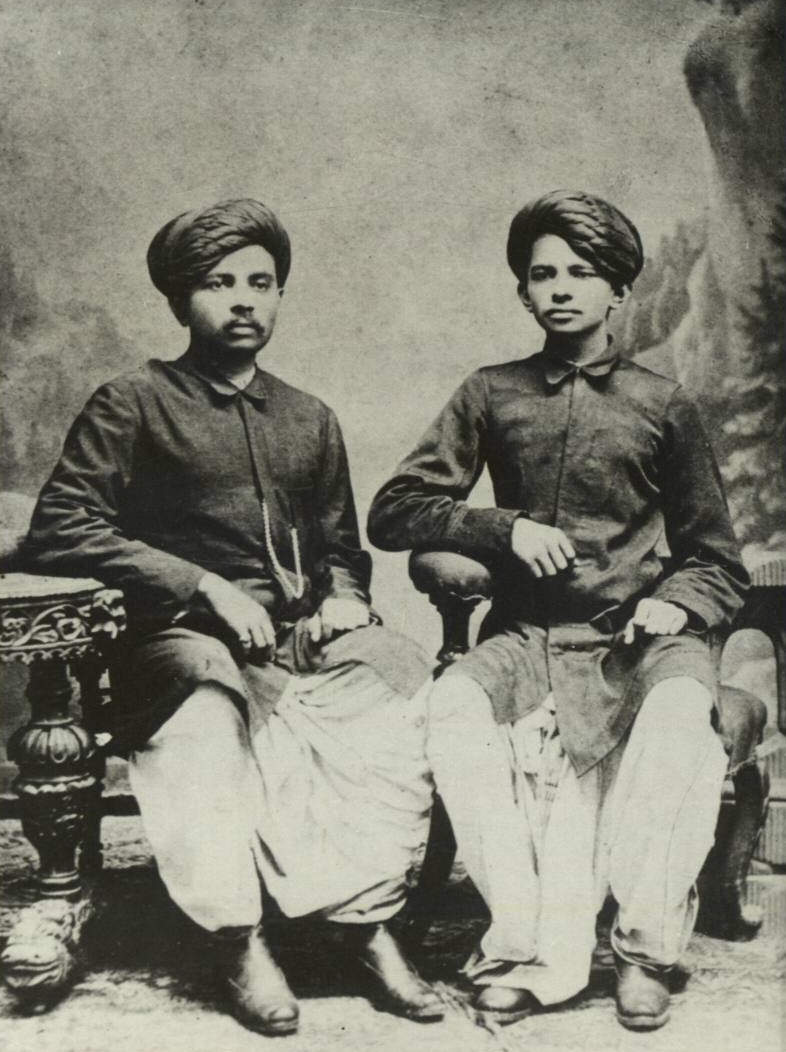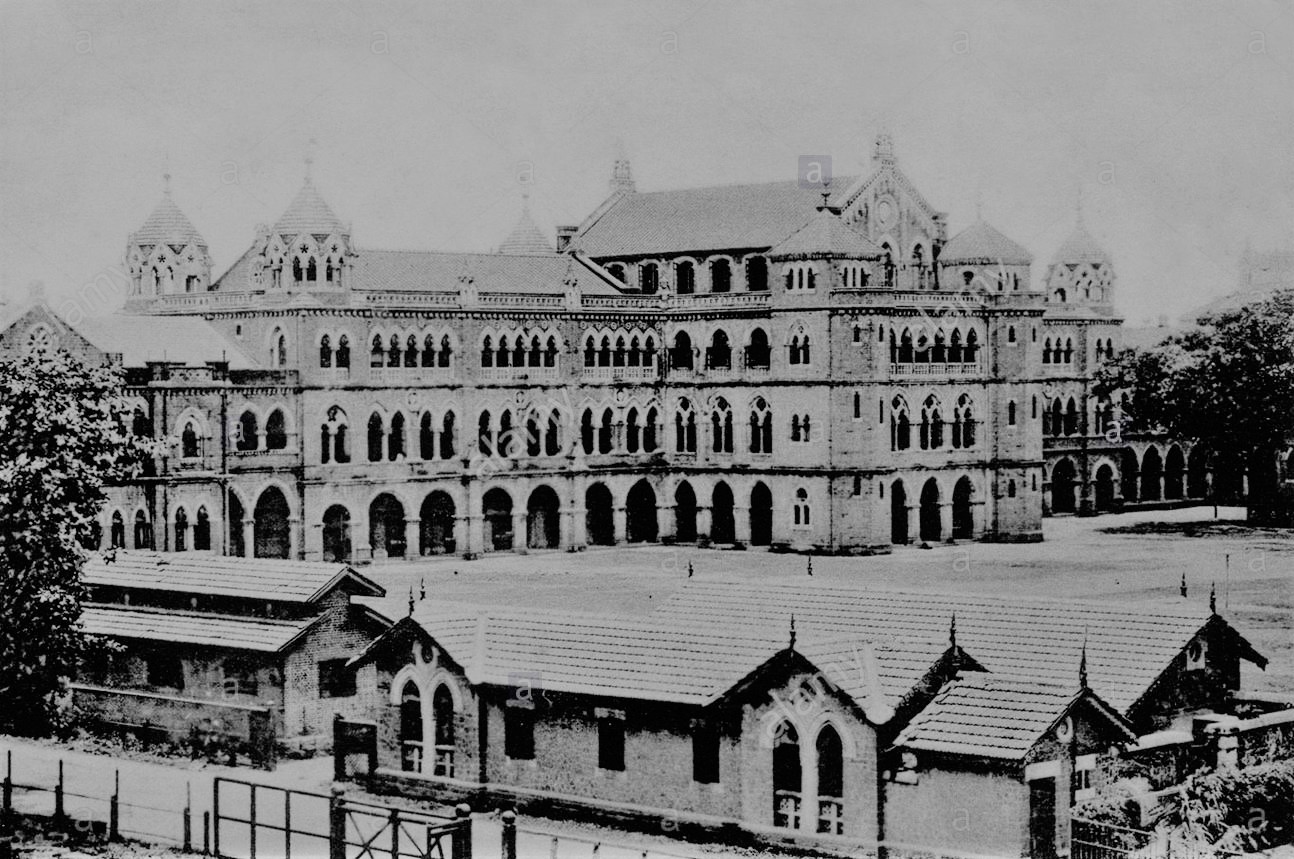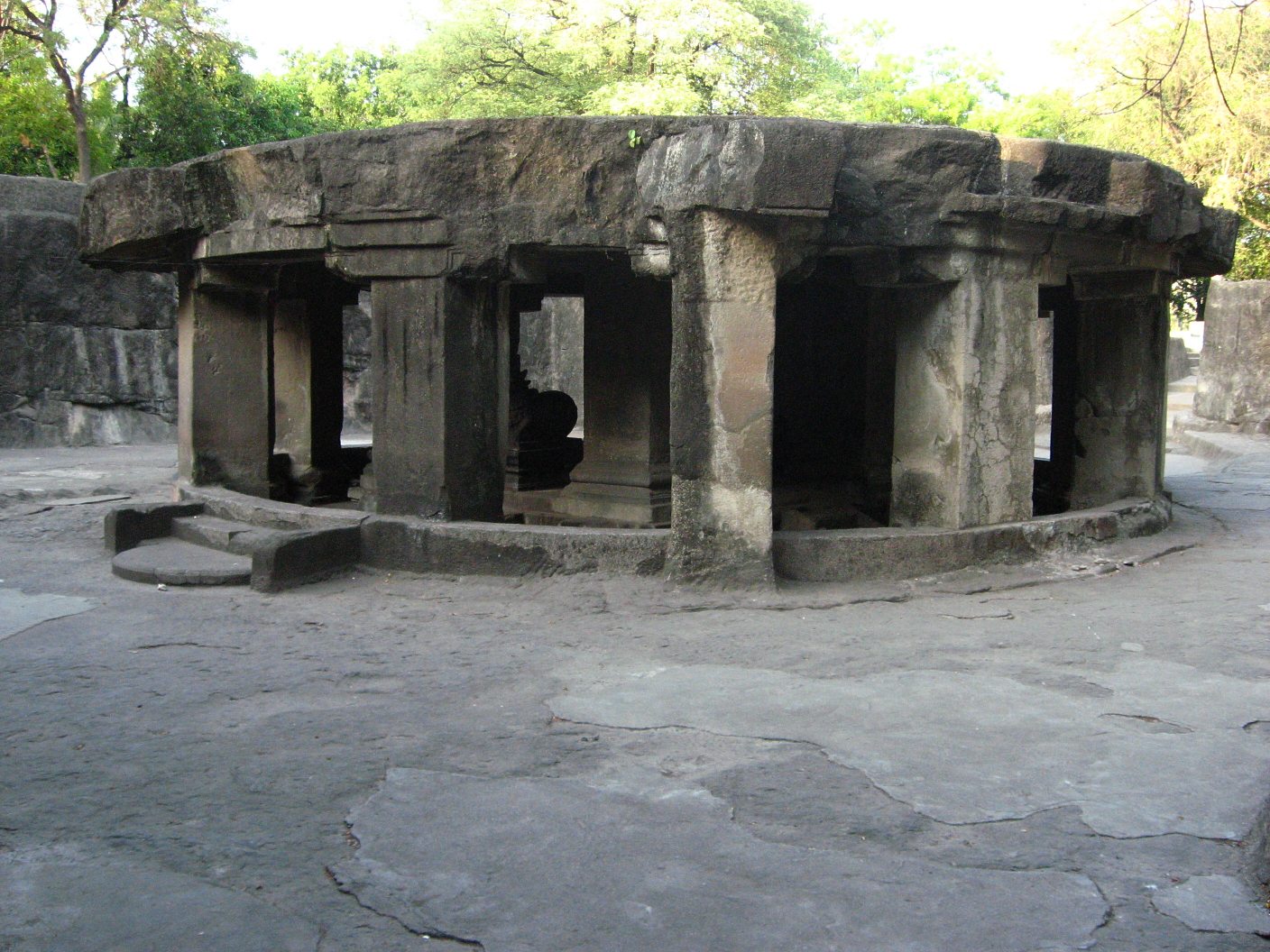|
Narmad
Narmadashankar Lalshankar Dave () (24 August 1833 – 26 February 1886), popularly known as Narmad, was an Indian Gujarati-language poet, playwright, essayist, orator, lexicographer and reformer under the British Raj. He is considered to be the founder of modern Gujarati literature. After studying in Bombay, he stopped serving as a teacher to live by writing. During his prolific career, he introduced many literary forms in Gujarati. He faced economic struggles but proved himself as a dedicated reformer, speaking loudly against religious and social orthodoxy. His essays, poems, plays and prose were published in several collections. His '' Mari Hakikat'', the first autobiography in Gujarati, was published posthumously. His poem '' Jai Jai Garavi Gujarat'' is now the state anthem of Gujarat state of India. Early life Narmad was born in Surat, Gujarat on 24 August 1833 to Lalshankar and Navdurga in a Nagar Brahmin family. His family home in Amliran, Surat was destroyed in the gre ... [...More Info...] [...Related Items...] OR: [Wikipedia] [Google] [Baidu] |
Mari Hakikat
''Mari Hakikat'' () is the autobiography of Narmadashankar Dave, popularly known as Narmad, a Gujarati author from Surat in 19th century India. It was the first autobiography to be written in the Gujarati language. Written in 1866, it was published posthumously in 1933 on the centenary of Narmad's birth. Origin and publication history Narmad wrote ''Mari Hakikat'' in 1866. He explained his intentions at the start of his autobiography; He added that his life will give some message to people. Narmad was candid and outspoken and he believed that his thoughts and works are exemplar. To give insights in his mind and world around him, he chose to write as openly as possible about events in his life, people connected with those events, his relations with those people and the results of those relationships. Narmad had published a collection of his essays as '' Narmagadya: Book 1'' in 1865. ''Suratni Mukhatesar ni Hakikat'' was published as ''Narmagadya: Book 2: Issue 1'' in 1866 from p ... [...More Info...] [...Related Items...] OR: [Wikipedia] [Google] [Baidu] |
Gujarati Literature
The history of Gujarat, Gujarati literature () may be traced to 1000 AD, and this literature has flourished since then to the present. It is unique in having almost no patronage from a ruling dynasty, other than its composers. Gujarat Vidhya Sabha, Gujarat Sahitya Sabha, Gujarat Sahitya Akademi and Gujarati Sahitya Parishad are Gujarat-based literary institutions promoting the Gujarati literature. History Such factors as the policies of the rulers, the living style of the people, and the worldwide influence on society are important for any literature to flourish. In Gujarat, due to the development of trade and commerce, the religious influence of Jainism as well as Hinduism, and also due to the safety and encouragement of rulers like Chaulukya dynasty, Chaulukya (Solanki) and Vaghela dynasty, Vaghela Rajputs, literary activities were in full force from the 11th century. * Gujarati literature ** Early literature (up to 1450 AD) *** Prāg-Narsinh Yug (1000 AD to 1450 AD) **** ... [...More Info...] [...Related Items...] OR: [Wikipedia] [Google] [Baidu] |
Gujarat
Gujarat () is a States of India, state along the Western India, western coast of India. Its coastline of about is the longest in the country, most of which lies on the Kathiawar peninsula. Gujarat is the List of states and union territories of India by area, fifth-largest Indian state by area, covering some ; and the List of states and union territories of India by population, ninth-most populous state, with a population of 60.4 million in 2011. It is bordered by Rajasthan to the northeast, Dadra and Nagar Haveli and Daman and Diu to the south, Maharashtra to the southeast, Madhya Pradesh to the east, and the Arabian Sea and the Pakistani province of Sindh to the west. Gujarat's capital city is Gandhinagar, while its largest city is Ahmedabad. The Gujarati people, Gujaratis are indigenous to the state and their language, Gujarati language, Gujarati, is the state's official language. The state List of Indus Valley civilisation sites#List of Indus Valley sites discovered, ... [...More Info...] [...Related Items...] OR: [Wikipedia] [Google] [Baidu] |
Jai Jai Garavi Gujarat (Poem)
"" is a poem written by Gujarati poet Narmadashankar Dave in 1873. It is used as a state anthem during ceremonies of the Government of Gujarat. Composition Narmad is considered the first modern Gujarati writer. He wrote the poem in 1873 as the foreword of his first Gujarati dictionary, '' Narmakosh''. In this poem, Narmad epitomises the sense of pride in the region by identifying the region of Gujarati people. He delineates the boundary within which the Gujarati-speaking population live: Ambaji in the north; Pavagadh in the east; Kunteshwar Mahadev near Vapi in the south; and Somnath, Dwarka in the west. This region mentioned by him now forms modern-day Gujarat, the western state of India. At the end of the poem, Narmad gives hope to the people of Gujarat that the dark clouds is lifting, and a new dawn is about to emerge. In 2011, the composition sung by various Gujarati singers was released by the Government of Gujarat. Lyrics See also * List of Indian state songs India i ... [...More Info...] [...Related Items...] OR: [Wikipedia] [Google] [Baidu] |
Buddhi Vardhak Sabha
The Buddhi Vardhak Sabha (Society for Advancement of Knowledge), also known as the Buddhi Vardhak Hindu Sabha, was a socio-religious reform organization in Bombay (now Mumbai), in British India. It was founded in 1851 by the members of another Bombay reform association, the Jnayan Prasarak Mandali, whose members included Narmadashankar Dave (Narmad) and his fellow writers. The Jnayan Prasarak Mandali was a branch of the Students' Literary and Scientific Society of the Elphinstone Institution (now Elphinstone College). The aim and object of the Buddhi Vardhak Sabha was to work for the social welfare of the Gujarati Hindu people, and to awaken public opinion for social change through lectures, debates and writings. Other founding members included Pranlal Mathurdas, Mohanlal Ranchhoddas Jhaveri, Karsandas Mulji, and Dalpatram. History Bombay's Elphinstone Institution played an instrumental role in providing an intellectual background for the reform movements in Western India. In Jun ... [...More Info...] [...Related Items...] OR: [Wikipedia] [Google] [Baidu] |
Surat
Surat (Gujarati Language, Gujarati: ) is a city in the western Indian States and territories of India, state of Gujarat. The word Surat directly translates to ''face'' in Urdu, Gujarati language, Gujarati and Hindi. Located on the banks of the river Tapti near its confluence with the Arabian Sea, it used to be a large seaport. It is now the commercial and economic centre of South Gujarat, and one of the largest urban areas of western India. It has well-established diamond and textile industry, and is a major supply centre for apparels and accessories. About 90% of the world's diamonds are cut and polished in Surat. It is the second largest city in Gujarat after Ahmedabad and the List of most populous cities in India, eighth largest city by population and List of million-plus urban agglomerations in India, ninth largest urban agglomeration in India. It is the administrative capital of the Surat district. The city is located south of the state capital, Gandhinagar; south of A ... [...More Info...] [...Related Items...] OR: [Wikipedia] [Google] [Baidu] |
Dalpatram
Dalpatram Dahyabhai Travadi (21 January 1820 – 25 March 1898) was a Gujarati language poet during 19th century in India. He was the father of Nanalal Dalpatram Kavi, a poet. He led social reform movements in Ahmedabad, and wrote articles against superstitions, caste restrictions and child marriage. He dealt with the problem of widow remarriage at length in his poem, ''Vencharitra''. Biography Dalpatram was born on 21 January 1820 at Wadhwan city of Surendranagar district in a Shrimali Brahmin family. His father's name is Dahyabhai. Dalpatram grew up to the resonant chanting of 'mantras' and recitations of religious scriptures. He was a child prodigy and displayed his extraordinary literary skills by composing ''hondula''s at the age of 12. He mastered the structures of rhyme, poesis and 'Vrajbhasha' as a Swaminarayan devotee under Brahmanand Swami, and later moved to Ahmedabad at the age of 24. Dalpatram died on 25 March 1898 at Ahmedabad. Career Dalpatram was a Sanskrit ... [...More Info...] [...Related Items...] OR: [Wikipedia] [Google] [Baidu] |
Nagar Brahmin
Nagar Brahmin is a Brahmin subcaste from the Indian state of Gujarat. Author T. Sasaki writes, amongst Brahmins of Gujarat, Nagar Brahmins were the most prominent subdivision in the political, economic and social relation, social activities of this region both before and during the British Raj. They have occupied important administrative posts in the courts during the time of the Gujarat Sultanate and the Mughal Empire. History The Nagar Brahmins originate in Vadnagar, in northern Gujarat, but are now mostly concentrated in Kathiawar. The name 'Nagar' is also believed to have come from their geographic origin, Vadnagar. While a few scholars have explored potential connections between Nagar Brahmins and Bengali Kayasthas, this remains a subject of debate. D. R. Bhandarkar, as cited by Tej Ram Sharma, notes the presence of identical surnames in both communities. Separately, Rabindra Nath Chakraborty proposes a theory of common ancestry, suggesting a settlement of Nagar Brahmi ... [...More Info...] [...Related Items...] OR: [Wikipedia] [Google] [Baidu] |
Mahatma Gandhi
Mohandas Karamchand Gandhi (2October 186930January 1948) was an Indian lawyer, anti-colonial nationalism, anti-colonial nationalist, and political ethics, political ethicist who employed nonviolent resistance to lead the successful Indian independence movement, campaign for India's independence from British Raj, British rule. He inspired movements for Civil rights movements, civil rights and freedom across the world. The honorific ''Mahātmā'' (from Sanskrit, meaning great-souled, or venerable), first applied to him in Union of South Africa, South Africa in 1914, is now used throughout the world. Born and raised in a Hindu family in coastal Gujarat, Gandhi trained in the law at the Inner Temple in London and was called to the bar at the age of 22. After two uncertain years in India, where he was unable to start a successful law practice, Gandhi moved to South Africa in 1893 to represent an Indian merchant in a lawsuit. He went on to live in South Africa for 21 years. Here, ... [...More Info...] [...Related Items...] OR: [Wikipedia] [Google] [Baidu] |
Elphinstone High School
Elphinstone High School was an English-medium school established in 1824 in Bombay, India in honour of Mountstuart Elphinstone, the then Governor of Bombay (1819–1827). In 1836 the Elphinstone Institute was founded, which started the Elphinstone College. Shah Mahmoud Hanifi, in his book ''Mountstuart Elphinstone in South Asia: Pioneer of British Colonial Rule'' mentions that the relationship between Elphinstone High School and the Elphinstone College was unclear until 1856, when both were formally separated. Economist and politician B. R. Ambedkar attended Elphinstone High School from 1904 to 1907, becoming the first person from the Dalit Dalit ( from meaning "broken/scattered") is a term used for untouchables and outcasts, who represented the lowest stratum of the castes in the Indian subcontinent. They are also called Harijans. Dalits were excluded from the fourfold var ... caste in India to attain this achievement. References {{ReflistGreater Bombay Di ... [...More Info...] [...Related Items...] OR: [Wikipedia] [Google] [Baidu] |
Pune
Pune ( ; , ISO 15919, ISO: ), previously spelled in English as Poona (List of renamed Indian cities and states#Maharashtra, the official name until 1978), is a city in the state of Maharashtra in the Deccan Plateau, Deccan plateau in Western India. It is the administrative headquarters of the Pune district, and of Pune division. In terms of the total amount of land under its jurisdiction, Pune is the largest city in Maharashtra, with a geographical area of 516.18 sq km, though List of cities in India by population, by population it comes in a distant second to Mumbai. According to the 2011 Census of India, Pune has 7.2 million residents in the metropolitan region, making it the List of metropolitan areas in India, seventh-most populous metropolitan area in India. The city of Pune is part of Pune Metropolitan Region. Pune is one of the largest IT hubs in India. It is also one of the most important Automotive industry in India, automobile and Manufacturing in India, manufacturin ... [...More Info...] [...Related Items...] OR: [Wikipedia] [Google] [Baidu] |
Adhyatma Ramayana
''Adhyatma Ramayana'' (Devanāgarī: अध्यात्म रामायण, International Alphabet of Sanskrit Transliteration, IAST: ''Adhyātma Rāmāyaṇa'', ) is a 13th- to 15th-century Sanskrit text that allegorically interprets the story of Hindu epic ''Ramayana'' in the Advaita Vedanta framework. It is embedded in the latter portion of ''Brahmānda Purana,'' and the author is considered to be Vyasa. The Hindu tradition also attributes the text to the Bhakti movement saint Ramananda. The text consists of 7 books, 65 chapters or 4,500 verses in the form of a dialogue between Shiva and Parvati. Adhyatma Ramayana contains the ideal characteristics of Rama and the precepts related to devotion, knowledge, dispassion, adoration and good conduct. Rama is presented as the supreme Brahman in the text, while the struggles of Sita and him are re-interpreted in an abstract spiritual form. The allegory inspired several later versions of the Ramayana story in languages like Awadhi ... [...More Info...] [...Related Items...] OR: [Wikipedia] [Google] [Baidu] |







